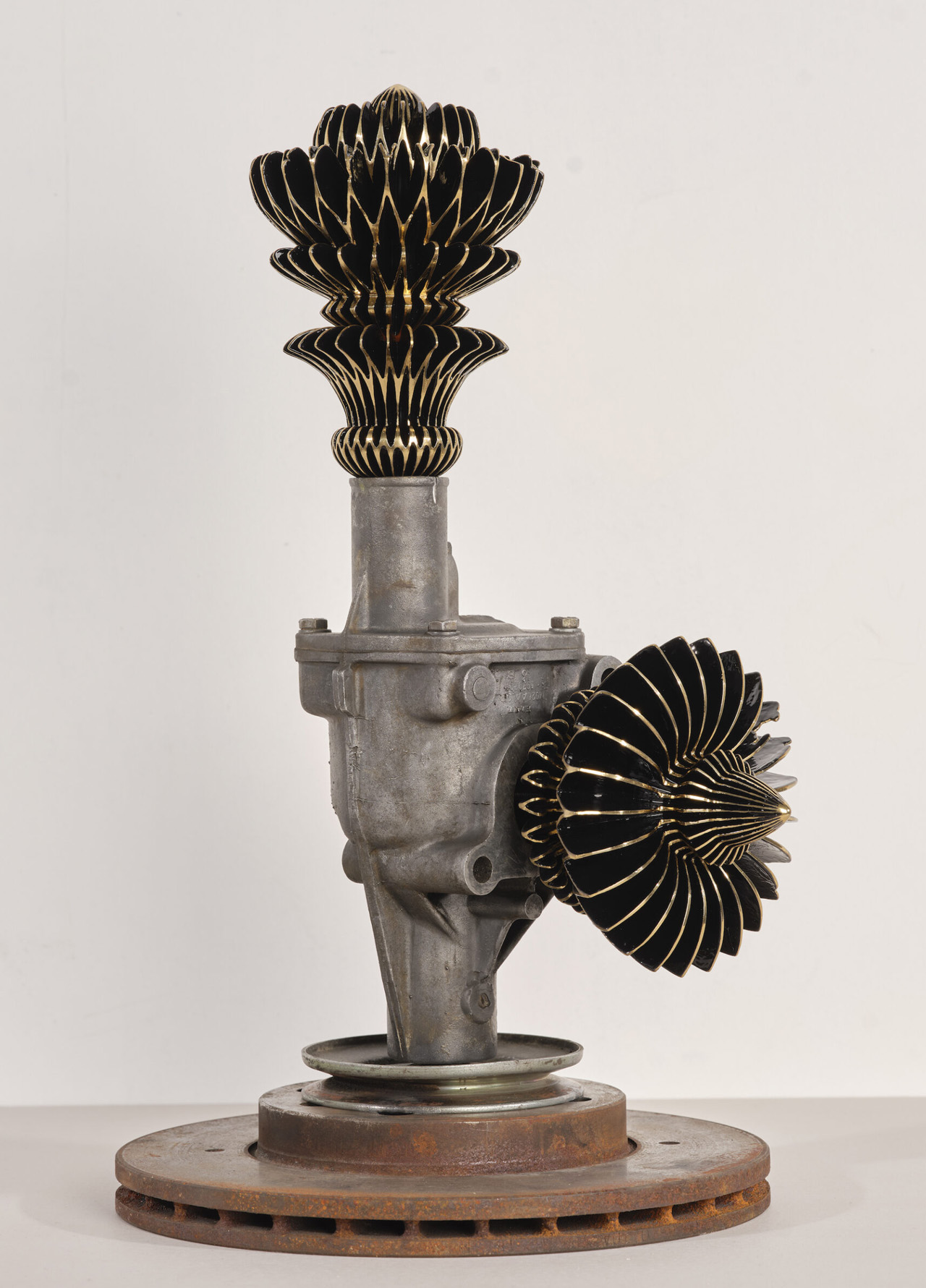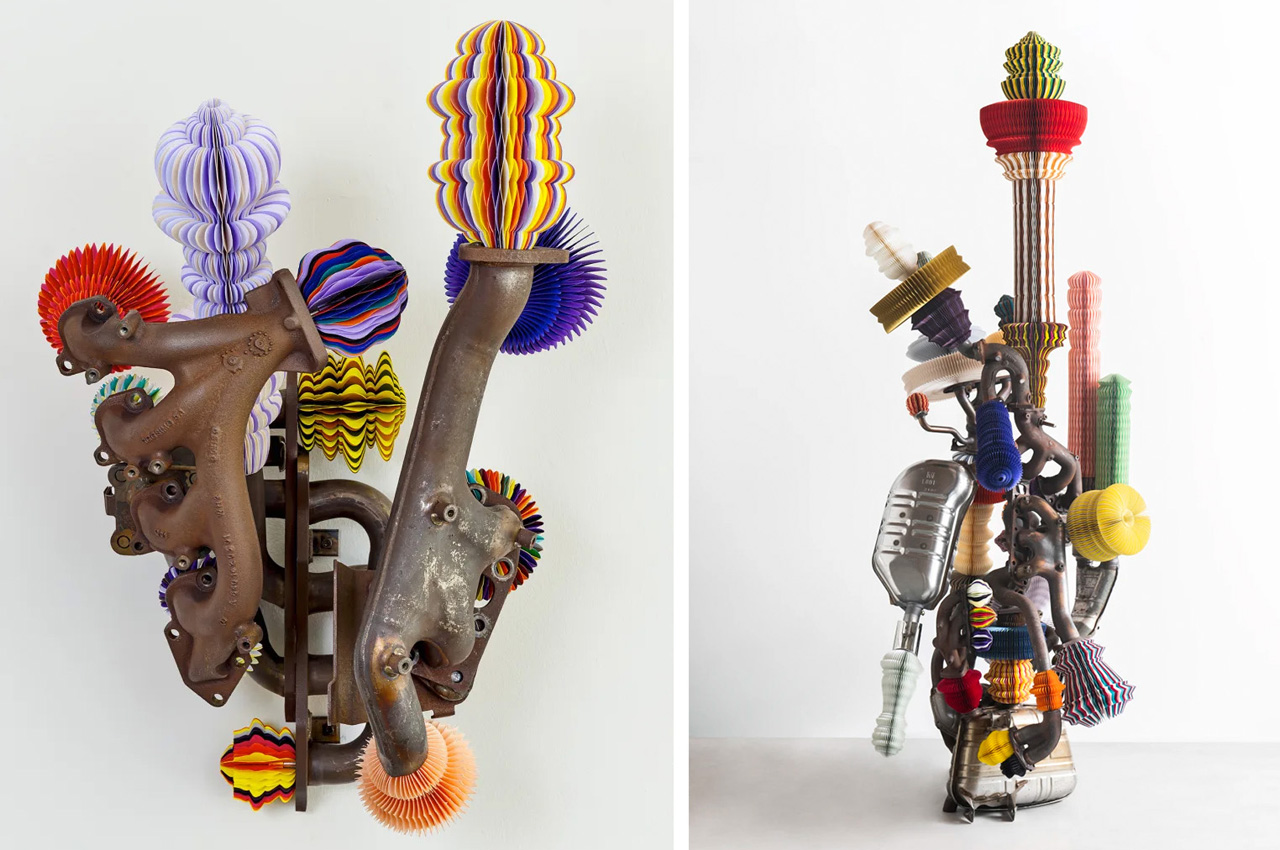
The earthquake and the consecutive tsunami that hit Japan on March 11, 2011, and destroyed the coastline, resulting in numerous deaths and bulldozing the country’s infrastructure was also a major catalyst for Keita Miyazaki’s artistic journey. The artist was a firsthand witness to the destructive face of nature, and he watched as the monstrous waves left hundreds of Japanese citizens homeless, and many others dead. He watched as access to necessities was halted, and realized how heavily dependent the Western world was on materials goods, wealth, and progress. And, how helpless humans became when such supplies were snatched away from them! As he questioned the basis on which the Western world measures its progress and evolution, the ‘Excess of Desire’ exhibition took birth.
Designer: Keita Miyazaki
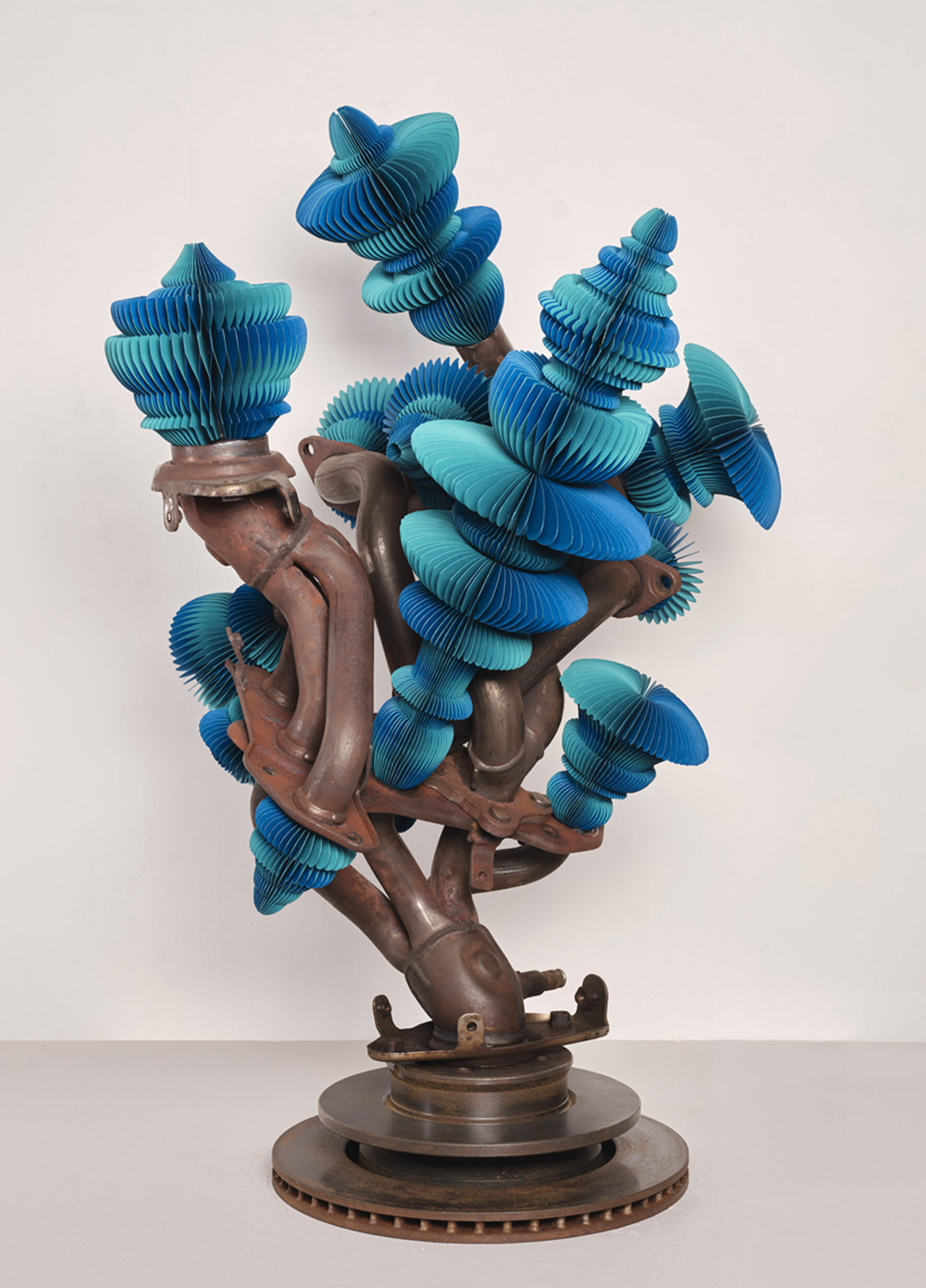
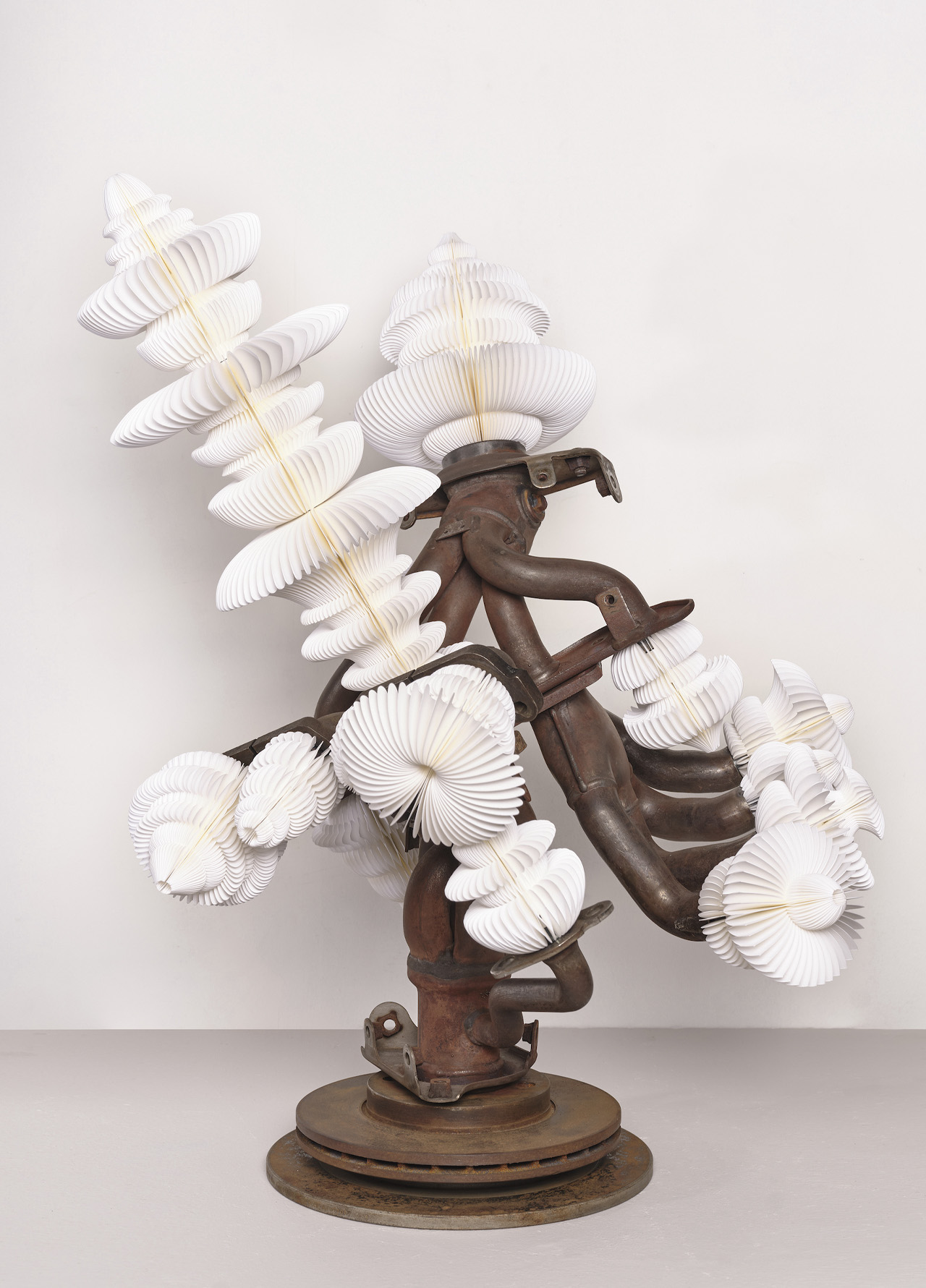
Excess of Desire is Miyazaki’s solo exhibition at Gallery Rosenfield. The collection includes eccentric and eclectic sculptures that seem to be growing oddly from the ground, or sprouting abruptly from pedestals. Miyazaki intertwines intricate and precise origami with heavy metal components to experiment and explore the dual nature of robustness and fragility, heaviness and lightness, the decorative and the utilization. He tries to draw a parallel between the contrast of these two natures, and how wholly different they are. The ends of the metal pipes are adorned with colorful fans and intricately folded papers which are an intriguing contrast to the car parts that are a reference to the 20th century automotive boom and advancing technology.
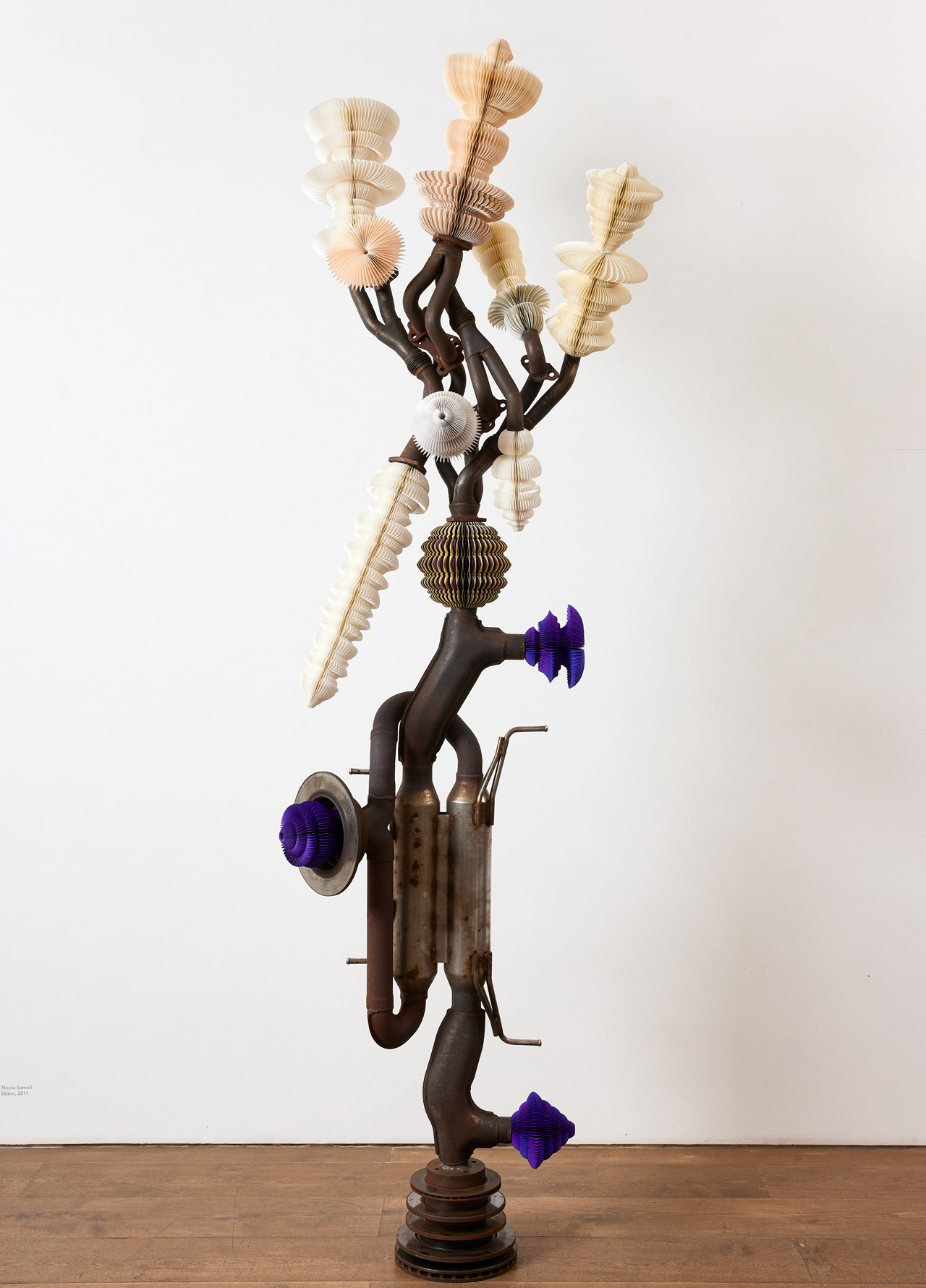
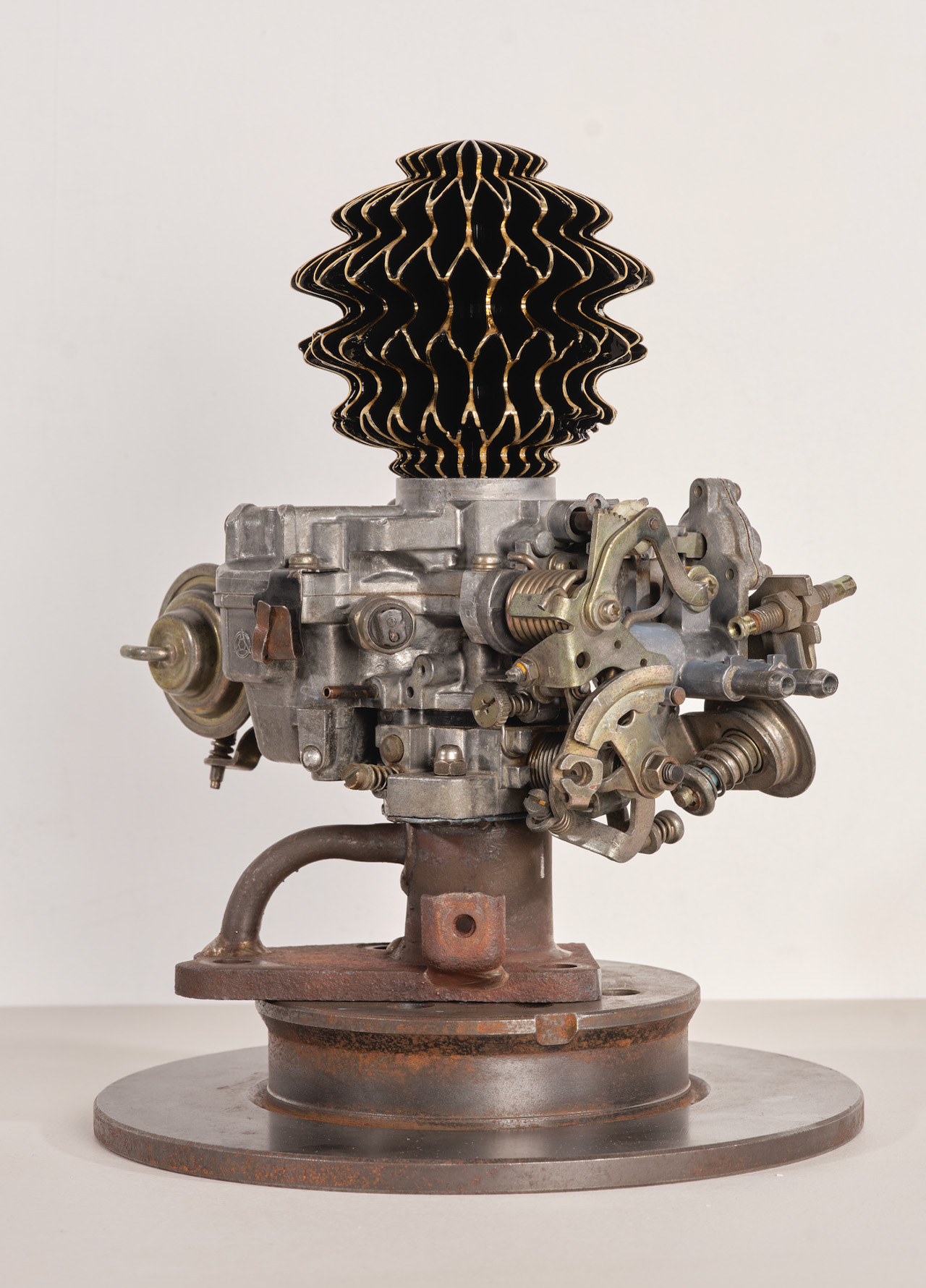
Miyazaki artfully welded together parts of mufflers and engines that are no longer functional, to create an interesting interplay between functionality and decay. He specifically picked parts such as specialized mufflers that were manufactured illegally in the 1980s and 1990s, and were quite popular back then as they increased a car’s noise level, and emitted a specifically desired sound. Through the ever-growing botanical-like forms that have an almost otherworldly appeal to them, Miyazaki attempts to question the frugality and frivolity of the excessive wealth found in society today, which after a point in time becomes obsolete and redundant.
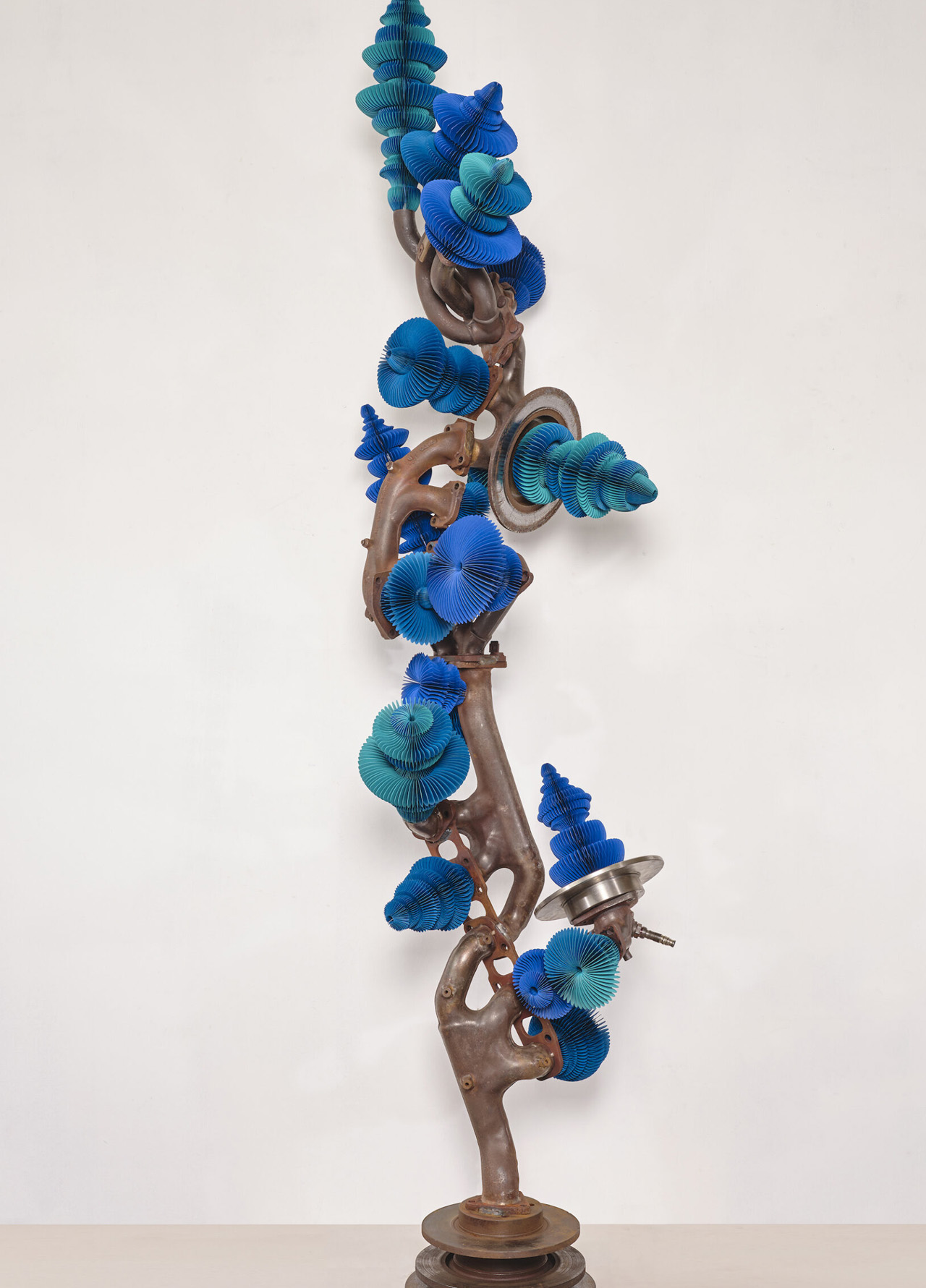
One of Miyazaki’s pieces was added to the Victoria and Albert Museum’s Japanese collection, and one of his floor works will be showcased at the Young V&A in Bethnal Green. The exhibition remains on view till September 30th, check it out if you get the chance!
